~ The Study of Threes ~
http://threesology.org
Visitors as of August 8th, 2022
| Page 1 | Page 2 | Page 3 | Page 4 | Page 5 |
| Page 6 | Page 7 | Page 8 | Page 9 | Page 10 |
| Page 11 | Page 12 | Page 13 | Page 14 | Page 15 |
| Page 16 | Page 17 | Page 18 | Page 19 | Page 20 |
In biology, (two or more) Fused segments are referenced as tagmata. Singular units are more properly referred to as
tagma, though adopted usage varies.
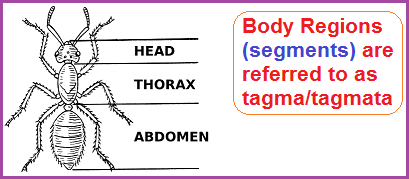 However, the presence of "fusion" as an indication of a possible environmental activity is not a commonality of exercised thought. For me, when
we take into consideration the incremental deterioration of the Sun, Moon, and Earth as a "Three Body Problem" (The Sun is burning out, the Moon
is receding, the Earth's rotation is slowing); we need to put all three events into an active visualization. By thinking that the originating influence
of the triplet code in DNA was influenced by the
three-patterned stroboscopic event of the Sun as it would have occurred with a fast spinning Earth, and that the Sun is fusing while the
Earth's rotation is slowing, biological processes will adapt to the "fusion" of the Sun's three phases
("moments"). Biological activities should show some representative response for those features which are correlated with the
individual phases. For example, if we say that each of the three germ layers is due to each of the overlapping three phases of the Sun's
different degrees of irradiation, then their one-for-one overlapping association may necessarily fuse together as the Sun's phases do. I
am not claiming the three Germ layers are indeed tied together as biological responses to the Sun's three phases, nor that this is not the
case, nor that we might find individual structures with such a affinity, but seeing as how important the Sun is and the rotation of the Earth
is like a centrifugal event creating test tube-like sedimentary differentiations, the proposal may not be that far-fetched in understanding
some measure of the tagmata idea arising from a fusion of segments which have fused.
However, the presence of "fusion" as an indication of a possible environmental activity is not a commonality of exercised thought. For me, when
we take into consideration the incremental deterioration of the Sun, Moon, and Earth as a "Three Body Problem" (The Sun is burning out, the Moon
is receding, the Earth's rotation is slowing); we need to put all three events into an active visualization. By thinking that the originating influence
of the triplet code in DNA was influenced by the
three-patterned stroboscopic event of the Sun as it would have occurred with a fast spinning Earth, and that the Sun is fusing while the
Earth's rotation is slowing, biological processes will adapt to the "fusion" of the Sun's three phases
("moments"). Biological activities should show some representative response for those features which are correlated with the
individual phases. For example, if we say that each of the three germ layers is due to each of the overlapping three phases of the Sun's
different degrees of irradiation, then their one-for-one overlapping association may necessarily fuse together as the Sun's phases do. I
am not claiming the three Germ layers are indeed tied together as biological responses to the Sun's three phases, nor that this is not the
case, nor that we might find individual structures with such a affinity, but seeing as how important the Sun is and the rotation of the Earth
is like a centrifugal event creating test tube-like sedimentary differentiations, the proposal may not be that far-fetched in understanding
some measure of the tagmata idea arising from a fusion of segments which have fused.
Permit me to use the model of itemization as a tool for those readers unable to clearly distinguish what I am describing by way of the foregoing sentence structure:
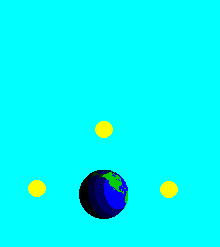
- Visualize the rotation of the Earth slowing down.
- Visualize an expansion of the Sun as it burns out.
- Keep in mind the three distinct phases ("moments") of the Sun (distinct, but overlapping... like insect body parts); labeled dawn-noon-dusk.
- As the Earth's rotation slows, the Sun's phases will become more prominent and effect biological activity as three items which are fusing together.
- The three overlapping "phases" are like three body segments (or tagma).
- When the segmentation of the three phases fuse together... making their separate identities less visible, the notion of a "three-in-0ne" (like the Christian three persons in one god-head called the Trinity), will be adapted to by a representative ideology... which is little more than an adopted rationalization used as a survival mechanism.
- All ideas, all biological activities which were developed as a result of the "overlapping three" circumstance as an adopted survival requirement, will necessarily be altered to accommodate the new reality.
Yep, it's a crazy idea, but we live in a world constructed of multiple crazy ideas "fused" together to produce what we call civilization, or history, or "the sciences", or mathematics, or a library, or a sports team, or a community, or a group, gang, family, workplace, etc... Another crazy idea is to suggest that we need to stop looking at Natural disasters as the only defining causation of a particular extinction. For example, if we look upon a developmental scenario of a brain (encephalization process) which has followed a course of one-lobe (not specifically defined nor given the label of "mono-lobed" ), two-lobes (called a bi-lobed brain) and three-lobes (tri-lobed brain); the idea of a mathematical sequentiality may or may not come to mind. Many may think of it, but not make it a custom to mention it repetitively in textbooks. However, this does not mean the sequentiality needs to occur at the same time for all life forms in the same manner. For example, whereas a Trilobite is consistently referenced as having three parts (Cephalon- Thorax- Pygidium), its extinction is sometimes described as one of those which a particular environmental event occurred (called the Permian Mass extinction event) [What Were Trilobites?], or due to some personal faulty structure such as an inconsistent molting style coupled with an inefficient physiology (Molting Habits may have let to Extinction of Trilobite.).
However, let us reexamine the idea of the Trilobite extinction by adopting a 1-2-3 mathematical scenario to suggest that the proposed three-part body structure appeared too early in time. In other words, the Trilobites were better suited for a later environmental setting when a three-part body distinction became more prevalent as seen in the pervasiveness of such a pattern with multiple life forms arriving later. The three-part body plan may have been a mutagenic appearance in the sense some people describe themselves as being more suited for an earlier or later period of time. The well-known idea that someone was "ahead of their time" may be the case for other life forms as well, and we can readily distinguish this by a mathematically represented identity of body form and/or functionality. Whereas some readers may want to try to throw a wrench into such a proposal by citing more-than-three body parts, they don't likewise then take the value and attempt to apply it to other enumerated forms and functions, such as Natural laws. (For example, the eight (2 X 4) legs of a spider may be correlated with the 8-pattern in the Octet occurrence of chemistry, but then the examples elsewhere tends to drop off... that is, become less frequent. Yet, the one, two, three and multiples (commonly due to repetition such as in a binary computer code) is a constant recurring theme, as if it were a "Law" of occurrence taking place in multiple subjects that has been overlooked, because most people only survey one or more subjects with the intent of finding some "Big" idea, instead of holding true to the idea of seeking the basic patterns being used. The idea of a 1-2-3 as a general statement for a recurring simplicity taking place in a subject-wide event is dismissed as an oddity, though we have multiple ideas which express these simple enumerations such as the three laws of motion, Einstein's 3-patterned E = MC2, holding a pen or pencil with three fingers, the two-pattern of yin/yang, and one-pattern in the concept of a single god... etc...
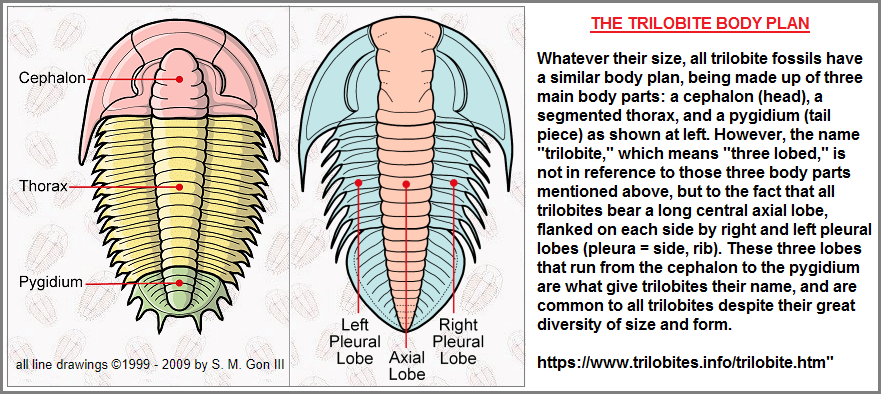
What are Trilobites?
Clearly, distinctions of form and functionality are to be made. Whereas nature may well engage in "functional fixedness" (a term from psychology), where one part is fixed on performing one function as a specification, some humans tend towards generalization in thought, behavior and emotion. While life has the capacity for great generalization, it also uses specialization by way of experimentation called evolution and mutation. Interestingly, we have a specific triplet code but a single strand for RNA and a double strand for DNA. Whereas we have 20 or so amino acids (depending on whose count we use), we have 3 stop codons and 1 start codon. We designate the conditions of a bipartite placenta and a tripartite placenta. And let us not that like in Chemistry when there is only one molecule, no "1" or "mono" or other label is used (O, O2, O3). In other words, whereas a two and three may be semantically, numerically or symbolically referenced, a single instance may not even be mentioned, or it is mentioned as not existing, though more accurately it is a condition that has not yet been observed nor its absence clearly understood.

In short, the repetition of certain values gives the impression that nature proceeds along a course which can be enumerated to help the human mind elucidate patterns which may be helpful in securing a greater model of sustainable survival and growth, amongst which is Mathematics. However, the enumeration is an activity engaged in by the human mind just as is Mathematics and every single subject being used as individualized vantage points in which to better help one in whatever adventure they are on for whatever purpose... whether such a purpose is known or adequately realized... if only as a collage of energy expenditure donned as a garment by a life form we might otherwise describe as a free spirit.
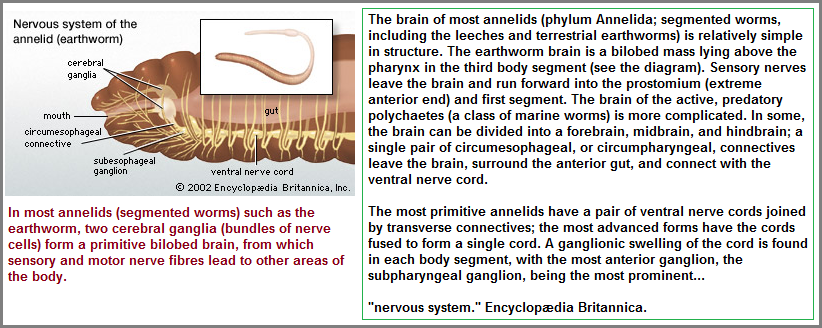
Abstract
The planarian is the simplest living animal having a body plan of bilateral symmetry and cephalization. The brain of these free-living flatworms is a bilobed structure with a cortex of nerve cells and a core of nerve fibres including some that decussate to form commissures. Special sensory input from chemoreceptors, photoreceptor cells of primitive eyes, and tactile receptors are integrated to provide motor responses of the entire body, and local reflexes. Many morphological, electro-physiological, and pharmacological features of planarian neurons, as well as synaptic organization, are reminiscent of the vertebrate brain. Multi-polar neurons and dendritic spines are rare in higher invertebrates, but are found in the planarian. Several neurotransmitter substances identified in the human brain also occur in the planarian nervous system. The planarian evolved before the divergence of the phylogenetic line leading to vertebrates. This simple worm therefore is suggested as a living example of the early evolution of the vertebrate brain. An extraordinary plasticity and regenerative capacity, and sensitivity to neurotoxins, provide unique opportunities for studying the reorganization of the nervous system after injury. Study of this simple organism may also contribute to a better understanding of the evolution of the human nervous system.
The brain of the planarian as the ancestor of the human brain by H B Sarnat, M G Netsky; PMID: 4084864 DOI: 10.1017/s031716710003537x
Let us look at the emergence of different life forms, in as much as we have a fossil record and can compare them with extant forms of life we characterize as being of the same family or related familial attachment. Indeed, some fossils such as trilobites are used to mark geological stratifications and take such a connection without too much second thinking. It should be noted that when I look at a time-line of different life forms coupled to their enumerated descriptions, I think I am looking at the precursor of the human counting system, as if such life form patterns etched out an archetypal image that the over- a long stretch of time development of the human brain has come to expose as being part of a serialized history exhibiting geometry, calculus, algebra, trigonometry, etc., in ways that humans have come to use numbers and symbols, graphs, etc., as markers for such a trek. All said, a new Mathematics is awaiting development into a full blown representative "life form" exhibiting a three-layering instead of the present two-patterned formula allowing to run rampant like different species running rampant in different niches. While we many not be able to eradicate all extant Mathematical forms of "living expression," we can curtail its parasitic presence in order to let a new model become established.
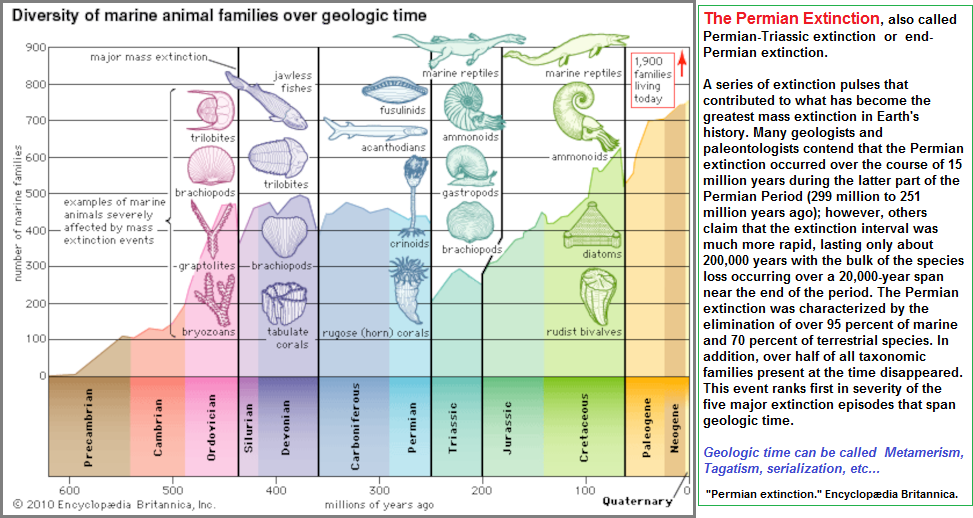
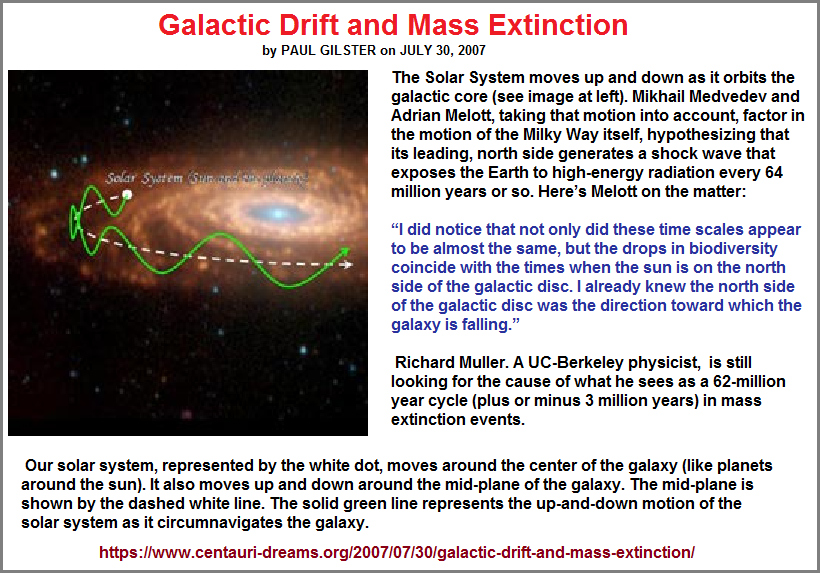
K-T extinction, abbreviation of Cretaceous-Tertiary extinction, also called K-Pg extinction or Cretaceous-Paleogene extinction.
a global extinction event responsible for eliminating approximately 80 percent of all species of animals at or very close to the boundary between the Cretaceous and Paleogene periods, about 65.5 million years ago. The K-T extinction was characterized by the elimination of many lines of animals that were important elements of the Mesozoic Era (251 million to 65.5 million years ago), including nearly all of the dinosaurs and many marine invertebrates. The event receives its name from the German word Kriede, meaning "chalk," and the word Tertiary, which was traditionally used to describe the period of time spanning the Paleogene and Neogene periods. The K-T extinction ranks third in severity of the five major extinction episodes that span geologic time.
Of the dinosaurs, only the archosaurs, a lineage that gave rise to modern birds and crocodilians, survived the extinction. Of the planktonic marine flora and fauna, only about 13 percent of the coccolithophore and planktonic foraminiferan genera remained alive. Among free-swimming mollusks, the ammonoids and belemnoids became extinct. Among other marine invertebrates, the larger foraminiferans (orbitoids) died out, and the hermatypic corals were reduced to about one-fifth of their genera. Rudist bivalves also disappeared, as did bivalves with a reclining life habit, such as Exogyra and Gryphaea. The stratigraphically important inoceramids also died out.
The mass extinction was quite different between, and even among, other marine and terrestrial organisms. Land plants appear to have fared better than land animals; however, there is evidence of widespread species extinctions of angiosperms and other dramatic shifts among North American plant communities. It is important to note that some groups of reptiles died out well before the K-T boundary, including flying reptiles (pterosaurs) and sea reptiles (plesiosaurs, mosasaurs, and ichthyosaurs). Among surviving reptile groups, turtles, crocodilians, lizards, and snakes were either not affected or affected only slightly. Effects on amphibians and mammals were also relatively mild. These patterns seem odd, considering how environmentally sensitive and habitat-restricted many of those groups are today. ("K-T extinction." Encyclopædia Britannica.)
The arthropods share many features with the phylum Annelida. Both are segmented, and members of the annelid class Polychaeta have a pair of appendages on each segment. The plan of the nervous system in arthropods is very similar to that of annelids, and the basic plan in both groups shows a tubular, dorsal heart, which is then lost or modified in some. Annelids possess a coelom, which in arthropods is present only in the embryo. Its absence is probably related to the evolution of the exoskeleton and to the change in the mode of locomotion.
The first fossil arthropods appear in the Cambrian Period (542 million to 488 million years ago) and are represented by trilobites, merostomes, and crustaceans. Also present are some enigmatic arthropods that do not fit into any of the existing subphyla. The earliest terrestrial arachnid is from the Devonian Period (416 million to 359 million years ago), but it does not belong to any living order. Though a myriapod-like fossil has been found from the Devonian Period, it is not until the Carboniferous Period (359 million to 299 million years ago) that there is a good record of centipedes, millipedes, and insects.
Most zoologists recognize the trilobites, chelicerates, crustaceans, and myriapods as four major lines of arthropod evolution, but there is little agreement as to how these lines are related to one another or, indeed, if they had independent evolutionary origins from the annelids.
("arthropod." Encyclopædia Britannica.) Article by Robert D. Barnes, Professor of Biology, Gettysburg College, Pennsylvania, 1963-93. Author of Invertebrate Zoology.
I am not saying that a "3" condition is always better than a "2" or a 2 better than a 1, or that some quantitative value beyond three is better, simplified by the old idea of more being better than a few. Whereas life has the ability to grow large in size (such as dinosaurs), functionality (adaptability) and number (as in many appendages or many species), but such experimentations frequently result in smaller values, quite possibly because the overall environment uses a reductionist (conservation) approach since life as we know it is subject to an environment which is on a course of incremental deterioration. As such, this is not to say that nature will discontinue in its adventuresome activities, such that a three-lobed... 3-"hemi-sphere" human brain would not be a viable asset, nor that a triple-stranded DNA (let us call it a tri-oxyribose nucleic acid) or triple-code (trinary) computer nor a triple-based mathematics can not be created or would not be valuable; but the implication for the existence of such a scenario may mean that a comprehensive understanding of life on Earth may be conditioned to such consequences we would otherwise prefer to remain in the dark about; living in a world of illusion, delusion and other imaginative nonsense akin to a substitute form of intoxication.
Although we collectively say there are three basic types of eating models (Herbivore- Carnivore- Omnivore), we do not claim them to represent some enumerated sense of the 1- 2- 3 values, though some might claim that the third form of eating is general (befitting a scavenger) the other two are specific, and limit their ability to adapt to ecosystems where their stable of food requirement is not readily available. Nonetheless, we can derived a sense of enumerated development successiveness.
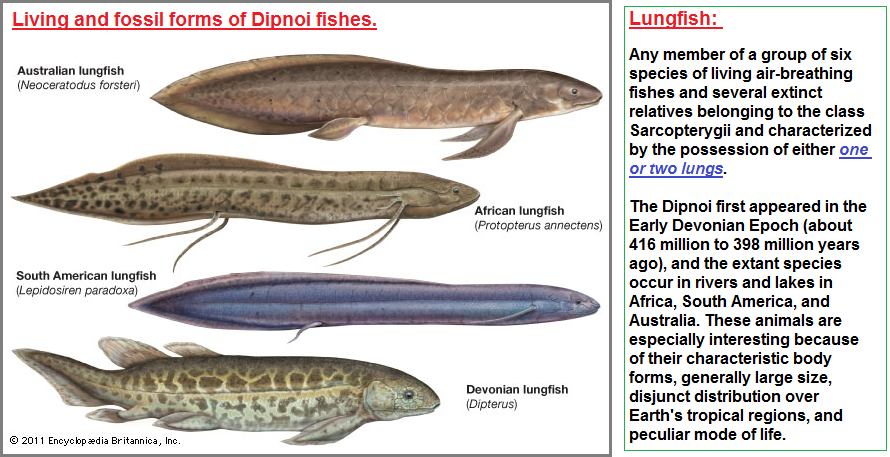
If we cite the (2-lobed) lung fish as an example of an evolved creature, it is interesting to note that while we have retained a two-lobed lung, it is the right lung (corresponding with the left brain hemisphere to be noted when a person experiences a stroke affecting the other side of the body), which has three lobes and the left lung (corresponding to the right brain hemisphere noted when a stroke takes place on this side) has two lobes. The 4-chamber heart (there exist 2-3 and 4-chambered hearts and 2-3-4 stroke internal combustion engines (along with other 2-3-4 ensembles: Devil's Advocate page 14 A). The right side of the heart has a tricuspid valve and the left side has a tricuspid valve. Both the heart and lungs are (respectively) active gas/fluid exchange systems that I interpret as extensions of the development scenarios the Earth has undergone in terms of fluids (such as water and lava) and various gases such as methane, oxygen, etc... However, the correspondence between the brain, lungs and heart as linked enumerations needs a further representative model:

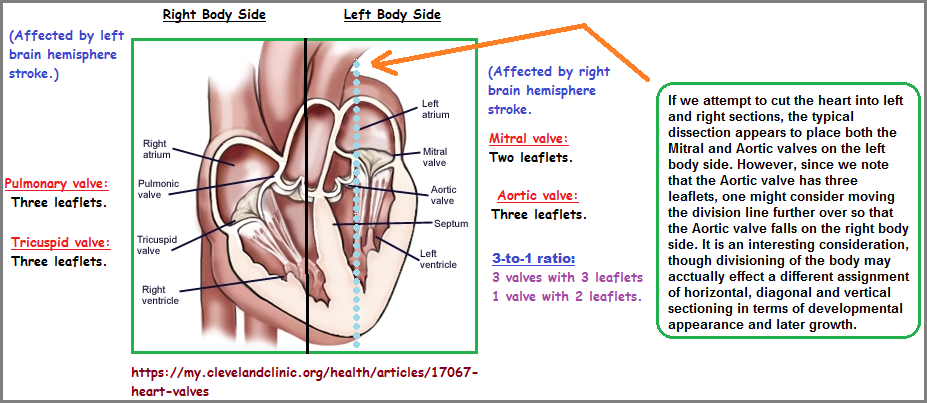
The 1-2-3 is a method of counting some may not like and prefer to obscure this basic pattern of enumeration so as to give the impression of being involved with something more complex, more serious, more important (requiring great intellectual skill and dexterity) than that which can be described by a simple enumeration. Yet, using words and/or symbols and/or context (and the titles of "important, famous" people/social positions) which can be used to conceal the presence of a simple model of enumeration does not make it go away. The king still has no clothes on regardless of laws, social customs, authoritative intimidations, traditions, edicts, practices, accepted 'given', threats, badgerings, etc... It still exists even if generations of students have been kept from recognizing it because of the language(s) and applications thereof employed to give the impression of some supposed greatness equal to the egos of those involved. If all of nature works in such a manner, though the manner may be otherwise formulated differently than the simple counting method herein stated, it can nonetheless be just as useful as when we put a puzzle together by connecting all the corner pieces together.
Organisms grown from two germ layers are recognized as being different from those which develop from three germ layers, only if because we have differentiated the presence of quantitatively different germ layers. But not all life forms which develop from three germ layers are said to have reached a sentient ability comparable to that of humans. A case in point is Earth worms compared to humans. While Earth worms develop from three germ layers as do humans, they are clearly different and can be distinguished from those life forms which develop from two germ layers. Such will be the case when a computer is designed with a basic triple language when compared to the present double (binary) language computers. And such will be the case when a Mathematics is developed with a basic triple foundation compared to the one now being used which sports a dichotomous cornerstone of scaffolding like the binary yin/yang architecture.
If the human brain has evolved to the point it requires a Mathematics with a basic triple foundation, than the present Mathematics with a double model, is like someone being confronted with life in a cave or similar crude structure. Like the human species being universally afraid of certain creatures like spiders, and snakes, in contrast to those feared due to having a bad first hand experience, we find Mathematics being confronted as if it were part of the same list. Yet, many people come to keep spiders and snakes as pets, just as some people come to love mathematics. On the one hand there may be an innate revulsiong to spiders and snakes, just as appears to be the case when a person confronts mathematics, is there a case to be said for the idea that humans have an innate fear of mathematics because it resembles something that past ancestors came to learn to avoid from personal experience? This suggest mathematics may be a complex(?? (imaginative?, crude... but realistic? drawing that represents a (life? environmental) form that was avoided in the past? For example, does it represent lightning, thunder, darkness... creature, (sound-based? sight-based?, touch-based?) experience?
Unlike meeting someone or something that is a "different" but we come to later accept them, this is not the case for Mathematics. It remains something to be avoided by most people. They even shy away from engaging in the use of mathematics as a form of entertainment other than when using dice, counting out spaces on a game board or as a simple measuring tool in gaming, even though some model of geometry is used when playing basketball, shooting billiards, playing catch, playing golf, etc... Mathematics is treated as something to be avoided, resulting in a myriad of personalized reasons used as excuses not to "tame" th Mathematics creature and make it a pet or use it as a raw ore to smelt into different tools, wares, and assorted implements.
If we encounter a life form which developed from two germ layers, we might indeed think it is strange... or otherwise, and some may continue a fascination by becoming quite adept at understanding not only one life form, but multiple others, just like a Mathematician and the multiple disciplines of Mathematics. Mathematics is a life form, is a creature that has developed from an underlying two-patterned developmental plan as well. While it is useful for the larger ecosystem, and has been spawned into multiple niches by way of developmental characteristics; the basic two-patterned structure... two-patterned foundation has remained intact, and not evolved into a basic three-patterned ("three germ layers") profile. The present kind of species that Mathematics is may be incapable of moving beyond its two-patterned formula, thereby requiring a different type of species like a computer species with a three-patterned (trinary) language to be distinguished from the present two-patterned (binary) language using computers. Three-patterned language computers will be a different kind of animal from the present (to be later viewed as a predecessor) two-patterned language computers. And in a sense, just like the mechanisms which initiated the development of a three-germ layer construction, humanity is a mechanism attempting to do this with computers and must try to do with Mathematics. While there may have been many stops and starts (drawing board excursions) in the development from a two to three- germ layered profile, where nature tried different types of initiators, such may be the case with humanity as well. Present humanity may be an attempt that is either successful or unsuccessful, whereby some other model of humanity will be required according to the dictates of an incrementally deteriorating environmental situation whose requirements may not be able to use any of the present day business, government or religious rationalizations being practiced due to their high usage of underlying two-patterned orientations (philosophies).
Some fundamental change may have to take place in the thinking of humanity (due to an underlying developmental and/or environmental and/or physiological influence), before a three-language based (called "quantum") computer is a fully functional life form to establish itself in all niches of human occupation. Those humans (and other life forms) and those technologies (as well as subjects such as the current model of mathematics), may not be able to adapt as richly as they have once the transition gets underway. Because there are those searching for a three-language model of computer, they are poised in a position which may afford them a readily available psychic sensitivity needed to make the change... the same goes for those who are seeking to develop a whole new model of Mathematics. The idea of be "poised" to both accommodate and make use of a new idea within a possibly changing environmentally-cued situation, is similar to the idea of those who come to appreciate the creative process as a sequence of events where a certain person is practiced enough to a degree suitable to be expressively creative in a given regard. Whereas creativity is said to follow certain steps outlined a little bit different here or there according to one's analysis, the overall sequence is said to contain an element of preparedness. While this is not to say that someone that does not appear to be prepared (seemingly having no previous experience) may come to express an idea or act which gives the impression of being quite astute, quite creative, quite brilliant, quite insightful, etc..., whereby others claim some theft, plagiarism, luck or other-than some genuine capacity existing in an individual has been revealed, whereby someone else can come to claim it as their idea because they have been sufficiently (socially) recognized as being in a state of preparedness (expertise or aptitude); this does not mean a leap in an idea from such an "outsider" did not or cannot occur, since evolution appears to create otherwise noted mutations which come to be a valuable asset for later members of the same (or different) species.
For example, a person may get hit in the head and due to the injury developed some to-be-amassed ability whereby it has routinely been accepted as an allowance, but if a person does not receive such an injury, does not have some identifiable event occur to them but they nonetheless develop a similar outcome of ability, they might be accused of cheating or that it is a one-time fluke. If such a person does not like the attention received from such an event or that their social/peer group acts negatively to them and then newfound social fame, they might seek to undermine their own ability so as to retain some former niche within a familiar group. However, if they come to evolve their social and personal life as well, we then have an analogy when speaking to the case for a change in Mathematics. Because it has not one but multiple niches in its current form of having an underlying two-patterned structure, a developmental change in it in the sense of a new Mathematics arising from a three-patterned framework may make it "feel" uncomfortable in its fledgling stages of development amongst a group of mathematics-looking creatures to which its development comes to reveal it no longer belongs to the present Mathematics peer groups in different social settings, and later on no longer belongs to the civilization of Mathematics presently dominant, but may be at the transitional phase of extinction, or to be relegated to the position of be a less complex life form like those which grow from two or one germ layer, as well as those said not to have a discernible germ layer at all.
Using a biology model and an analogy with a binary computer language to survey the state of current mathematics is helpful, but not a definitive source from which to garner ideas. Particularly when biology uses an old Binomial Nomenclature established by Carl Linnaeus who was a:
Swedish naturalist and explorer who was the first to frame principles for defining natural genera and species of organisms and to create a uniform system for naming them (called a binomial nomenclature). ("Linnaeus, Carolus." Encyclopædia Britannica.)
Let us make note of the a sequence of "Binomial" oriented events (husbands/wives... artificial/natural classifications) which played a part in the development of his Binomial idea:
Sexual System of classification
A few days after arriving in the Dutch town of Harderwijk in May 1735, Linnaeus completed his examinations and received his medical degree following the submission of a thesis he had prepared in advance on the topic of intermittent fevers. Linnaeus and Sohlberg then journeyed to Leiden, where Linnaeus sought patronage for the publication of his numerous manuscripts. He was immediately successful, and his Systema Naturae ("The System of Nature") was published only a few months later with financial support from Jan Frederik Gronovius, senator of Leiden, and Isaac Lawson, a Scottish physician. This folio volume of only 11 pages presented a hierarchical classification, or taxonomy, of the three kingdoms of nature: stones, plants, and animals. Each kingdom was subdivided into classes, orders, genera, species, and varieties. This hierarchy of taxonomic ranks replaced traditional systems of biological classification that were based on mutually exclusive divisions, or dichotomies. Linnaeus's classification system has survived in biology, though additional ranks, such as families, have been added to accommodate growing numbers of species.
In particular, it was the botanical section of Systema Naturae that built Linnaeus's scientific reputation. After reading essays on sexual reproduction in plants by Vaillant and by German botanist Rudolph Jacob Camerarius, Linnaeus had become convinced of the idea that all organisms reproduce sexually. As a result, he expected each plant to possess male and female sexual organs (stamens and pistils), or "husbands and wives," as he also put it. On this basis, he designed a simple system of distinctive characteristics to classify each plant. The number and position of the stamens, or husbands, determined the class to which it belonged, whereas the number and position of pistils, or wives, determined the order. This "sexual system," as Linnaeus called it, became extremely popular, though certainly not only because of its practicality but also because of its erotic connotations and its allusions to contemporary gender relations. French political theorist Jean-Jacques Rousseau used the system for his "Huit lettres élémentaires sur la botanique á Madame Delessert" (1772; "Eight Letters on the Elements of Botany Addressed to Madame Delessert"). English physician Erasmus Darwin, the grandfather of Charles Darwin, used Linnaeus's sexual system for his poem "The Botanic Garden" (1789), which caused an uproar among contemporaries for its explicit passages.
(continued on next page)
Date of Origination: 19th March 2022... 5:23 AM
Initial Posting: 8th August 2022, 9:10 AM
Updated Posting: 2nd January 2023... 10:49 AM